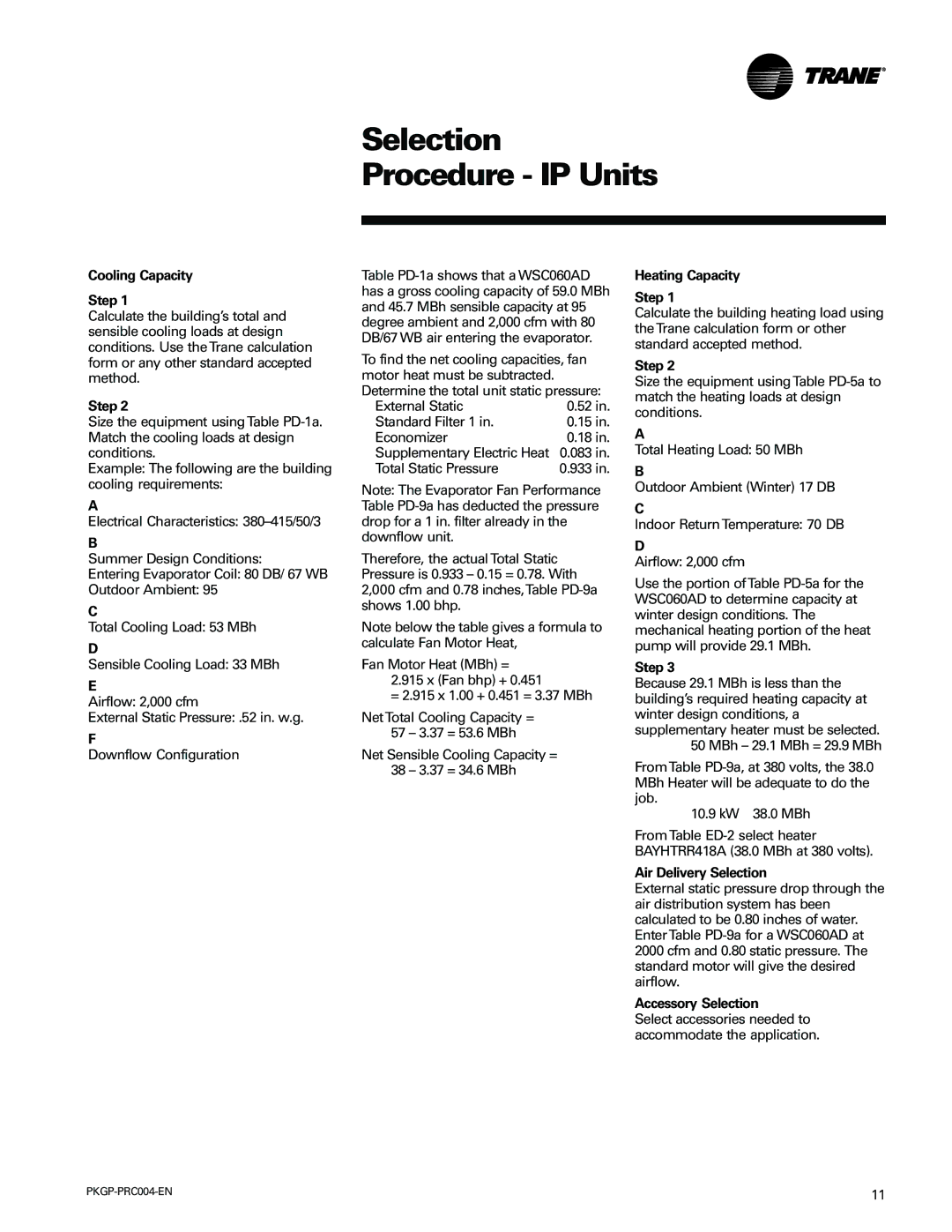
Selection Procedure - IP Units
Cooling Capacity
Step 1
Calculate the building’s total and sensible cooling loads at design conditions. Use the Trane calculation form or any other standard accepted method.
Step 2
Size the equipment usingTable
Example: The following are the building cooling requirements:
A
Electrical Characteristics:
B
Summer Design Conditions:
Entering Evaporator Coil: 80 DB/ 67 WB
Outdoor Ambient: 95
C
Total Cooling Load: 53 MBh
D
Sensible Cooling Load: 33 MBh
E
Airflow: 2,000 cfm
External Static Pressure: .52 in. w.g.
F
Downflow Configuration
Table
To find the net cooling capacities, fan motor heat must be subtracted. Determine the total unit static pressure:
External Static | 0.52 in. |
Standard Filter 1 in. | 0.15 in. |
Economizer | 0.18 in. |
Supplementary Electric Heat | 0.083 in. |
Total Static Pressure | 0.933 in. |
Note: The Evaporator Fan Performance Table
Therefore, the actualTotal Static Pressure is 0.933 – 0.15 = 0.78. With 2,000 cfm and 0.78 inches,Table
Note below the table gives a formula to calculate Fan Motor Heat,
Fan Motor Heat (MBh) = 2.915 x (Fan bhp) + 0.451
= 2.915 x 1.00 + 0.451 = 3.37 MBh
NetTotal Cooling Capacity =
57 – 3.37 = 53.6 MBh
Net Sensible Cooling Capacity =
38 – 3.37 = 34.6 MBh
Heating Capacity
Step 1
Calculate the building heating load using theTrane calculation form or other standard accepted method.
Step 2
Size the equipment usingTable
A
Total Heating Load: 50 MBh
B
Outdoor Ambient (Winter) 17 DB
C
Indoor Return Temperature: 70 DB
D
Airflow: 2,000 cfm
Use the portion ofTable
Step 3
Because 29.1 MBh is less than the building’s required heating capacity at winter design conditions, a supplementary heater must be selected.
50 MBh – 29.1 MBh = 29.9 MBh
FromTable
10.9 kW 38.0 MBh
FromTable
Air Delivery Selection
External static pressure drop through the air distribution system has been calculated to be 0.80 inches of water. EnterTable
Accessory Selection
Select accessories needed to accommodate the application.
11 |
